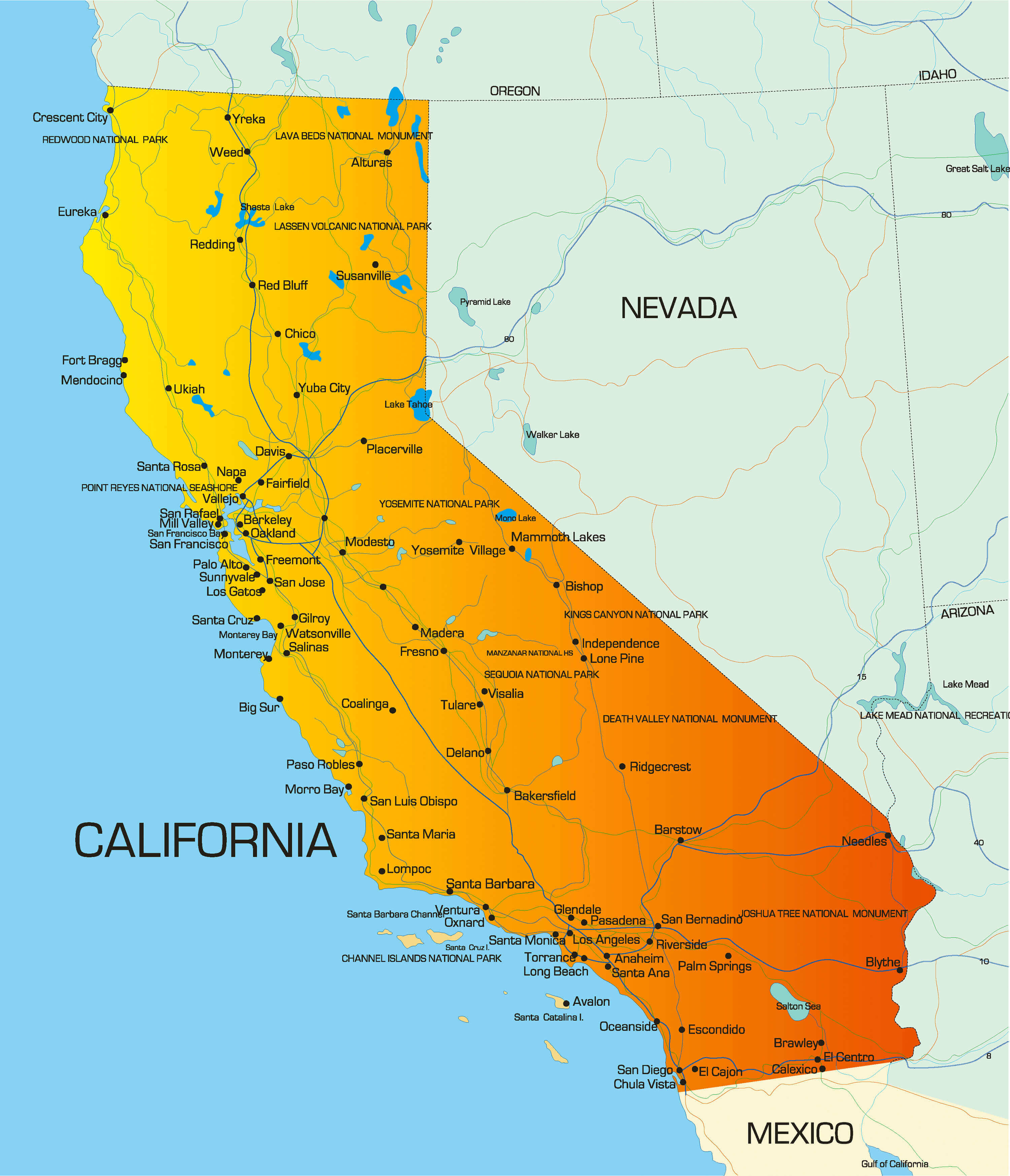California Plane Crash - Understanding Aviation Safety
When we consider California, a place known for its wide-open spaces and busy cities, the thought of something like a plane crash can bring a lot of concern. This western part of the United States, resting right on the Pacific coast, is a very active area, seeing countless flights each day. It is a land of striking beauty, from its long beaches to its towering mountains, and it draws many people for both work and play, which means a good deal of air traffic moving through its skies. So, when events involving aircraft occur, even if they are not common, they tend to capture public attention quite quickly.
The state, which joined the union as the thirty-first member on September 9, 1850, grew to be the most populated by the early 1960s, a trend that has continued to this day. This population growth, along with its strong economy, means that its airspace is, in some respects, constantly in use. People travel here for its national parks, its many hotels, its diverse restaurants, and its lovely beaches, not to mention the mountain areas. All of these activities depend on a well-run system of transport, including air travel, making any discussion of safety in the air very important indeed.
California, often called the "Golden State," shares its borders with Oregon to the north, Nevada and Arizona to the east, and even extends southward to Mexico, making it a gateway for many different kinds of flights. Its vastness, stretching over 800 miles from the Mexican border in Imperial County through places like Riverside and San Bernardino, means a wide range of weather conditions and landscapes that planes might fly over. This diverse geography, you know, presents its own set of considerations for those who manage air travel and respond to unexpected situations, should they arise.
Table of Contents
- What Makes California Unique for Air Travel?
- How Does California's Geography Affect Aviation?
- Are There Specific Safety Measures for California Plane Crash Scenarios?
- Understanding Air Traffic in the Golden State
- Resources and Support After a California Plane Crash
What Makes California Unique for Air Travel?
California, with its varied land features and its spot on the map, offers a rather distinct environment for anything to do with air travel. This state, stretching along the Pacific Ocean, includes many different kinds of places, from deserts to mountains, and a very long coastline. This means that planes flying over California might encounter many different kinds of conditions, even on a single flight. The land is known for its beautiful Pacific coastline, and too it's almost for its well-known spots, which all contribute to the large number of people who visit and move around the state, often by air.
The sheer length of California, more than 800 miles, from the southern parts near the Mexican border, all the way up through many counties like Riverside and San Bernardino, means there is a wide range of weather and land types to consider. This wide stretch of land, you know, presents its own set of challenges for air traffic controllers and pilots, as they guide planes through areas that could be quite different from one another in terms of wind, temperature, and even visibility. It’s a place where you can find everything from warm, dry deserts to cool, damp coastal areas, sometimes within a relatively short distance.
Given its location, California is also a place where different cultures meet, particularly Mexican food and culture, and this adds to the overall busy feel of the state. This cultural richness, in a way, is part of what makes California such a popular destination for visitors from all over, which in turn contributes to the busy air routes. The state's official tourism site, Visit California, helps people find things to do and places to visit, like national parks, hotels, and beaches, all of which often involve air travel to get there, or to move between different parts of this very big state.
How Does California's Geography Affect Aviation?
The physical makeup of California, its mountains, valleys, and coastal areas, plays a role in how air travel is managed here. For instance, the mountain ranges can create their own weather patterns, like strong winds or areas where air moves in unusual ways, which pilots need to be aware of. Then there's the long stretch of Pacific coastline, which means many flights take off or land near the ocean, or fly over it, bringing with them considerations for flights over water. This varied landscape, basically, means that flight paths are not always straightforward and require careful planning.
California is also in what people call "earthquake country," where the paths of fault lines are quite well-known, much like a map of the state's highways. While earthquakes do not directly cause planes to crash, the fact that the state experiences such natural events means that all infrastructure, including airports and air traffic control centers, must be built to withstand such forces. This focus on strong building, you know, helps keep things running smoothly even when the ground moves, which is a key part of overall safety for everything, including air operations.
The vastness of the state, from its northern border with Oregon down to its southern edge with Mexico, covers many different kinds of environments. This means that search and rescue efforts, should they ever be needed after an event like a California plane crash, could take place in very different settings, from dense forests to wide-open desert lands, or even out over the ocean. This variety in terrain means that emergency teams need to be prepared for many different situations, and that planning for these kinds of events is very comprehensive.
Are There Specific Safety Measures for California Plane Crash Scenarios?
When it comes to keeping people safe in the air, California follows all the rules and guidelines set out for the whole country, and then some. The state government, through its official website Ca.gov, provides access to many services and resources, some of which touch upon emergency preparedness and public safety. These resources are designed to help people find what they need, whether it's about general safety or what to do in an unexpected situation. So, there is a clear framework in place for dealing with all kinds of incidents, including those involving aircraft.
Given the state's high population and its many busy airports, there are very strict rules about how planes take off, land, and fly through the air. Air traffic controllers work tirelessly to keep everything organized, making sure planes maintain safe distances and follow their assigned paths. This constant watchfulness, you know, is a key part of preventing problems. The systems in place are complex, but they are designed to manage the very large number of flights that pass through California's airspace every single day, trying to keep everything as safe as can be.
For any situation that might arise, including a California plane crash, there are plans in place that involve various agencies working together. These plans cover everything from immediate response to helping people who are affected. The state's approach is to be ready for many different kinds of events, and this readiness is something that is often practiced and reviewed. This kind of preparation, you see, is a big part of how California tries to ensure the safety and well-being of everyone within its borders, whether they are on the ground or in the air.
Understanding Air Traffic in the Golden State
California's skies are, quite literally, buzzing with activity. As the most populated state in the United States since the early 1960s, it naturally has a huge amount of air travel, both for people moving within its borders and for those coming from or going to other places. Major cities like Los Angeles and San Francisco are big hubs for air travel, and this means a lot of planes are always moving through the air around them. This constant movement, you know, is a sign of the state's busy life and its role as a key place for business and tourism.
The state's economy is a strong one, and this also adds to the amount of air traffic. Businesses rely on quick transport for goods and people, and this often means using planes. So, the skies above California are not just for people going on holiday; they are also a vital part of how the state does business. This mix of different kinds of flights, basically, adds to the complexity of managing the airspace, but it also shows how important air travel is to the everyday life and success of California.
Gavin Newsom, the state's governor, often speaks about various aspects of California life, and while he may not always talk about air traffic directly, the broader issues he addresses, like the well-being of the state's 5.8 million schoolchildren, are connected to a smoothly running society that includes safe transportation. The general aim of the state's leadership, you see, is to make sure that all parts of life, including how people move around, are as good as they can be. This focus on overall well-being means that safety in the air is always a consideration.
What Role Does Population Play in California Plane Crash Preparedness?
With so many people living in California, the planning for any kind of emergency, including something like a California plane crash, takes into account the large number of residents. This means that emergency services, hospitals, and other support systems need to be ready to help many people at once. The density of people in certain areas, particularly around major cities, also influences how flight paths are set up, often trying to keep planes away from very crowded spots when possible, just to be extra careful.
The state's official resources, like Ca.gov, are set up to serve a very large public, providing information and services that can be useful in many different situations. This includes details on how to get help, or where to find reliable updates during an emergency. The sheer size of the population, you know, means that communication during an incident is very important, making sure that information reaches everyone who needs it quickly and clearly, which is a big part of staying safe.
Because California is such a popular place to live and visit, there are many people who might be affected by any major incident. This means that the state's plans for helping people after an event are very broad, covering not just those directly involved, but also their families and the wider community. This focus on supporting the whole community, basically, is a key part of how California prepares for and responds to challenging situations, making sure that everyone gets the help they need.
Resources and Support After a California Plane Crash
Should an event like a California plane crash occur, there are many official sources of information and support available to the public. The state of California has a well-organized system for sharing updates and providing help. For instance, Ca.gov is the official website for the state, and it is a place where you can find and get access to many services and resources that the state provides. This includes information that could be very important during or after an incident, making it a key place to look for reliable news.
Beyond the immediate response, there are also systems in place to help people deal with the effects of such an event over time. This includes support for families, as well as information about how to stay safe and what steps to take. The various state agencies work together to make sure that all necessary help is given, from emergency teams to those who provide longer-term care. This coordinated effort, you know, is a vital part of how California looks after its people when things go wrong.
The state map of California is a good way to see its many different places, showing its varied geography, its cities, and its well-known spots. This map, in a way, also highlights the coastline along the Pacific, which is a major area for air travel. Knowing the layout of the land can be helpful for understanding the challenges of any response effort, as teams might need to reach places that are far from roads or in difficult terrain. So, understanding the state's geography is also a part of understanding its preparedness.
Where Can You Find Official Information on California Plane Crash Events?
For the most accurate and up-to-date information regarding any major event in California, including something like a California plane crash, the official state website, Ca.gov, is the primary source. This site is designed to be a central point for all official news and services from the state government. It's where you can typically find announcements, public safety warnings, and links to other relevant agencies that might be involved in a response. So, it is always a good idea to check this site first for reliable details.
Other state resources, such as those from Visit California, while focused on tourism, also provide a broader picture of the state and its various regions. This general information about California, its national parks, hotels, restaurants, beaches, mountains, and cities, can help people understand the context of any situation. Knowing the lay of the land, you know, and the different communities within it, can sometimes help make sense of how an event might unfold or where help might be needed. These resources paint a picture of a very active and varied state.
The state also has many information resources that link to its homepage, symbols, flags, maps, and even its constitution. These links provide a comprehensive view of California's government, culture, and various points of interest. While not directly about plane crashes, these resources show the depth of public information available, which speaks to the state's overall commitment to openness and public service. This general access to information, basically, helps people stay informed about many aspects of life in California, including how official bodies operate during times of need.

Map of California

About California State, Best places to Visit in California | Joonsquare USA

The 31 California Fun Facts You’ll Wish You Knew Sooner